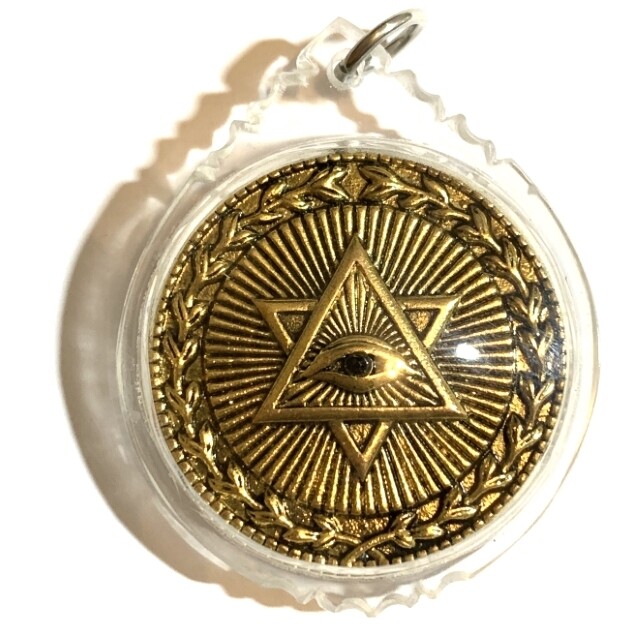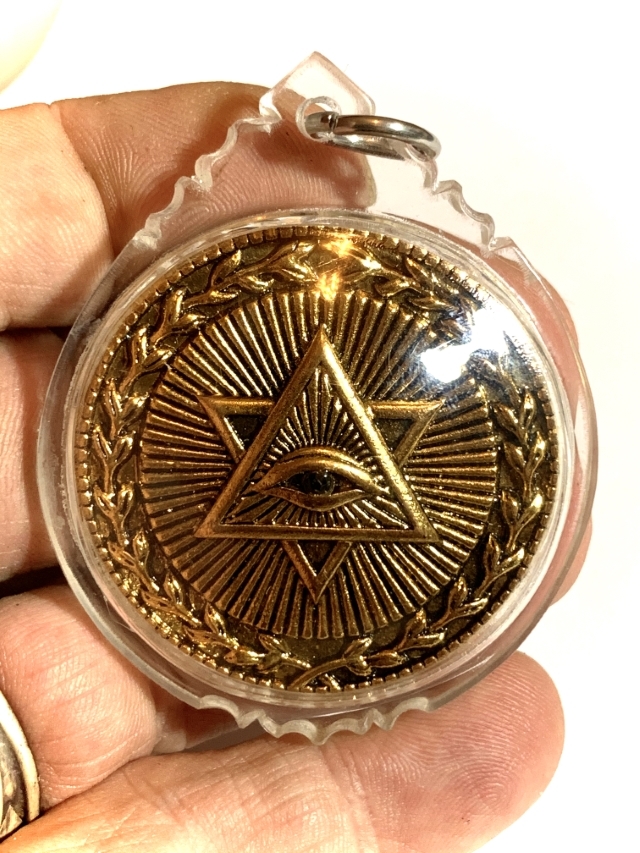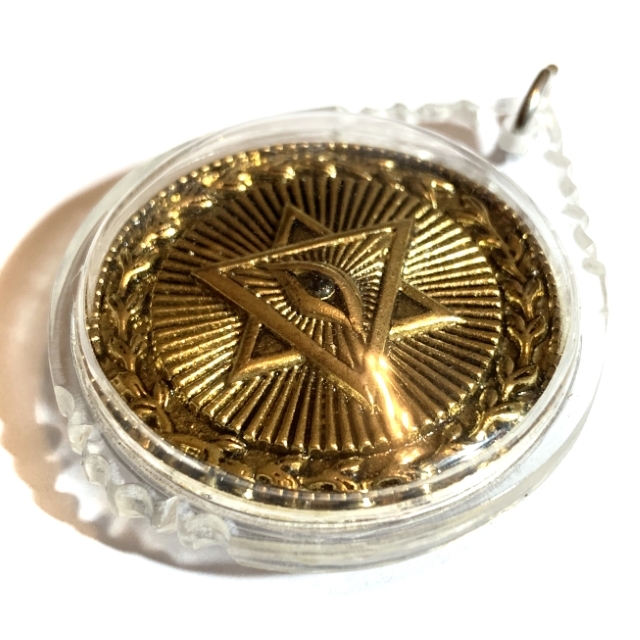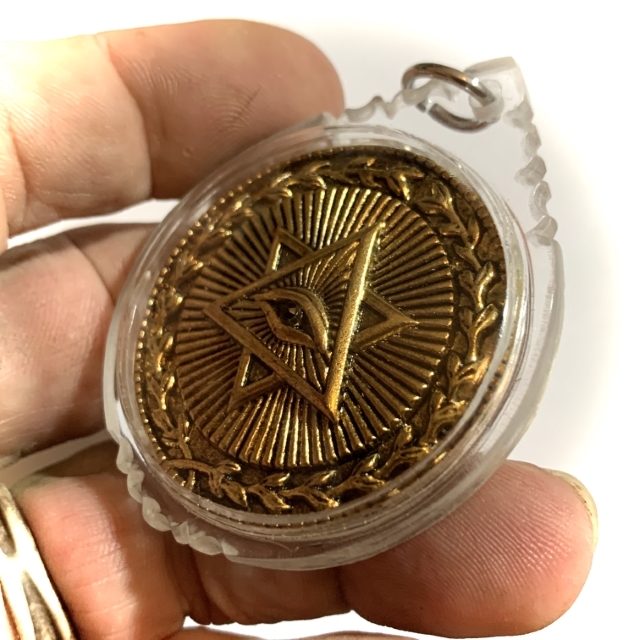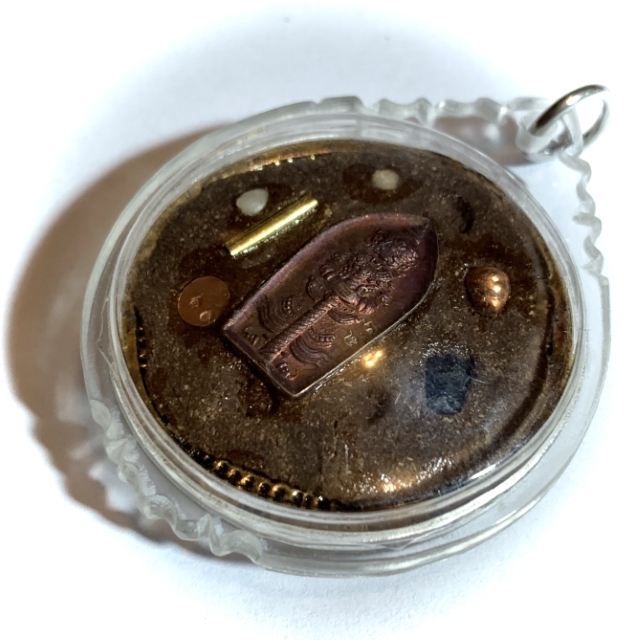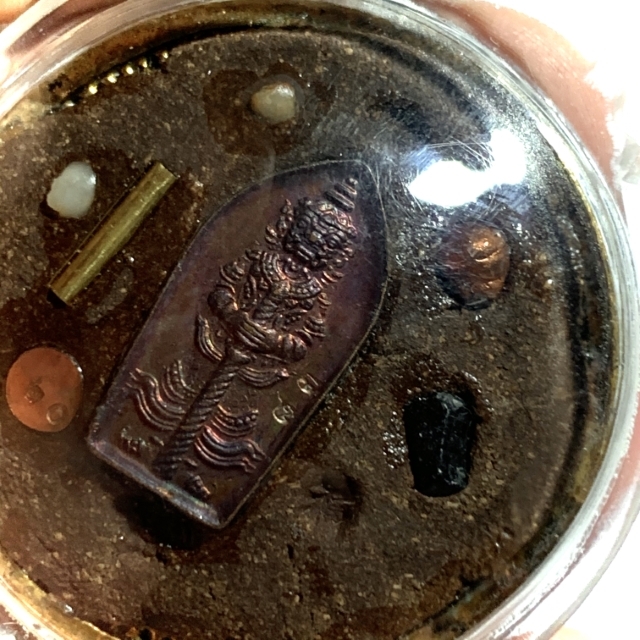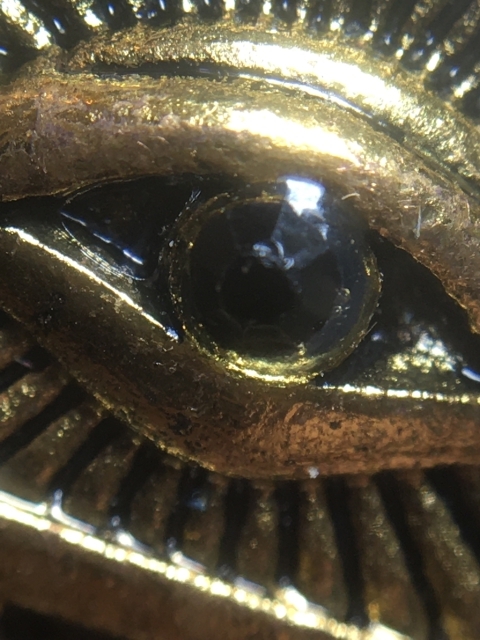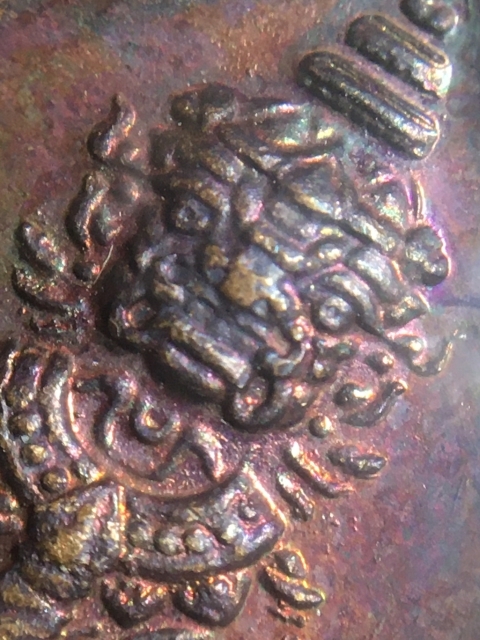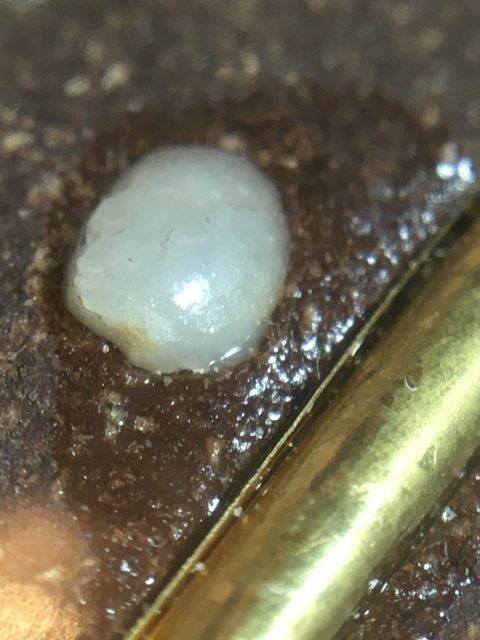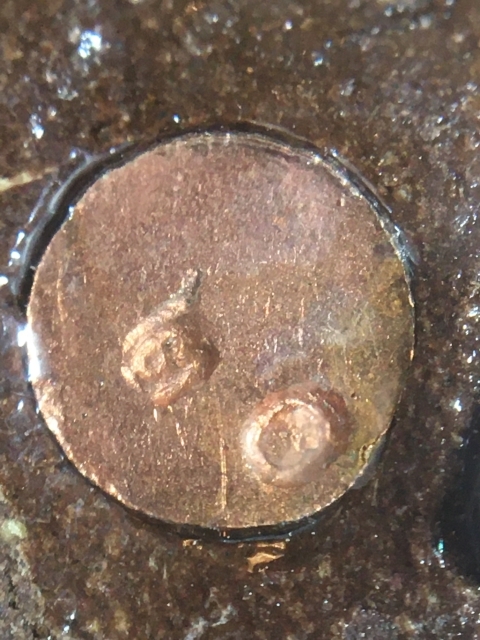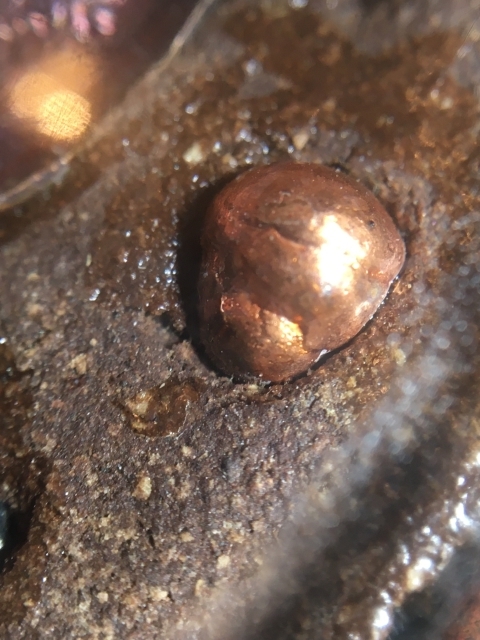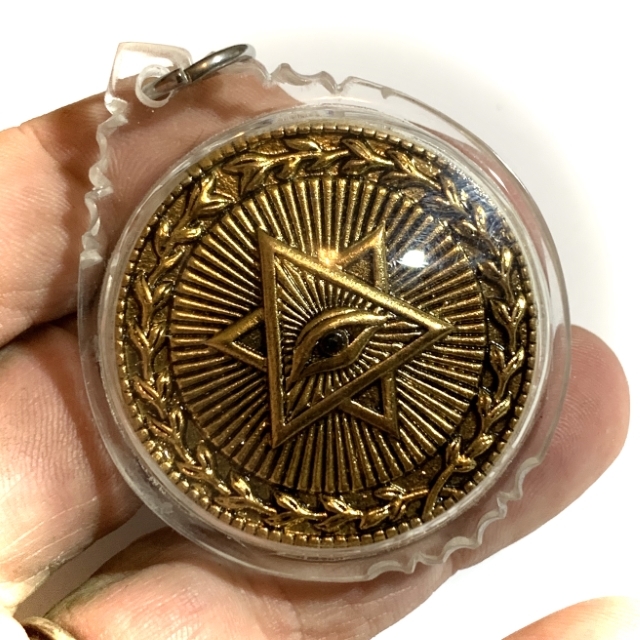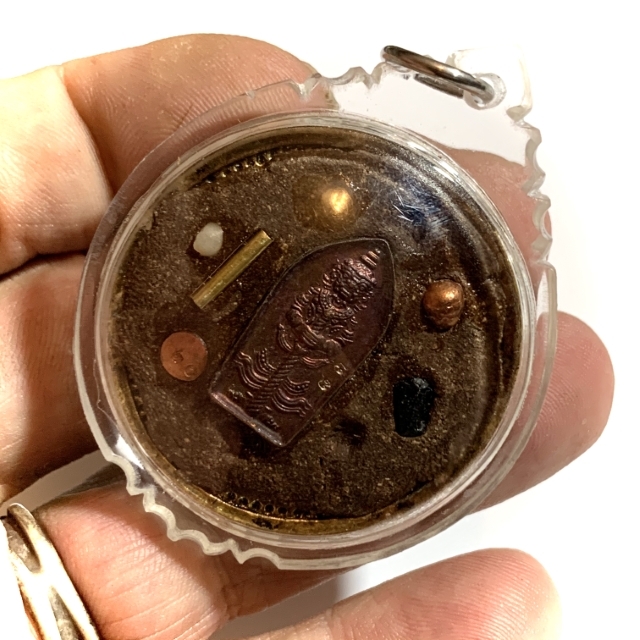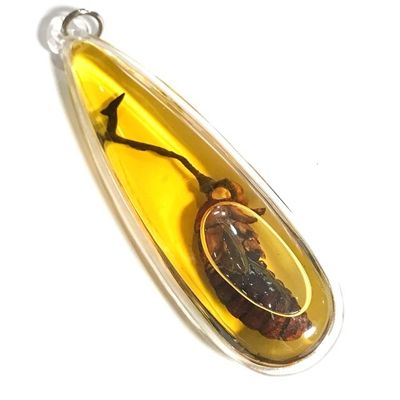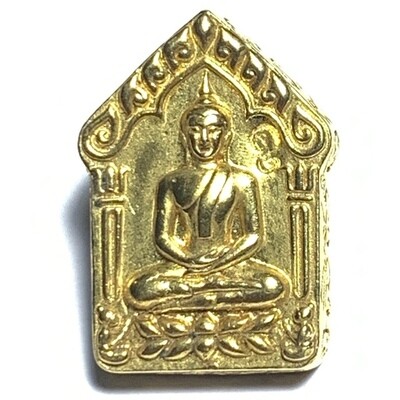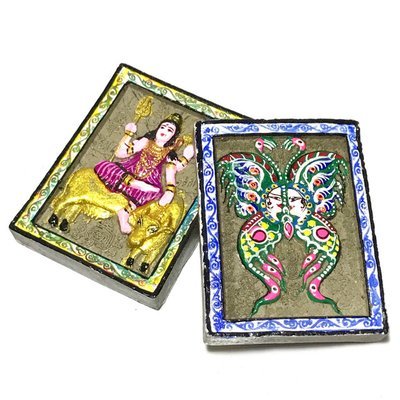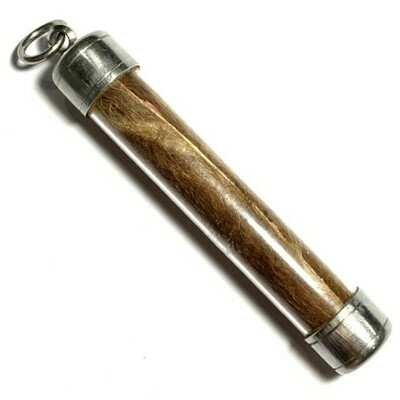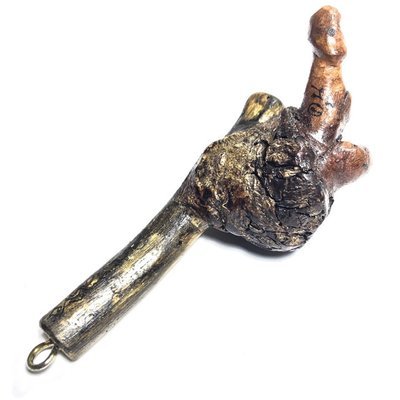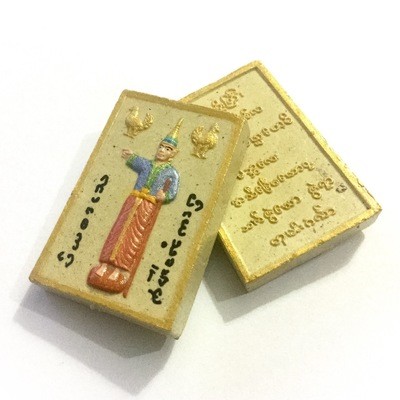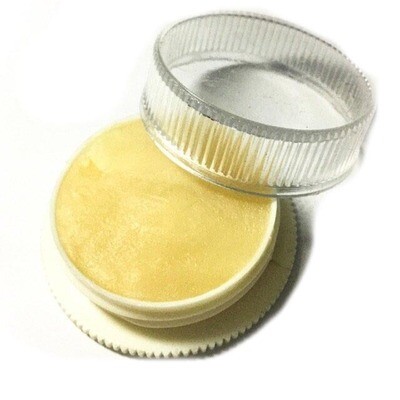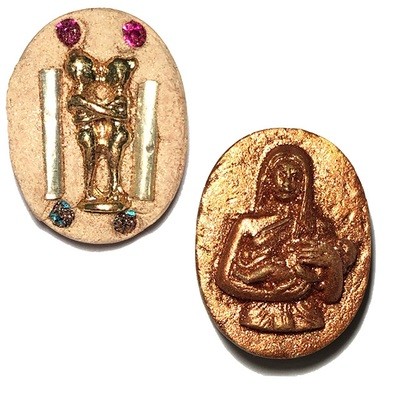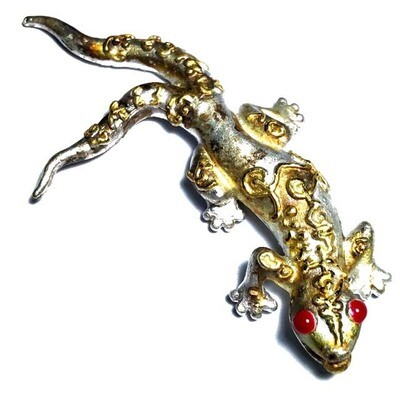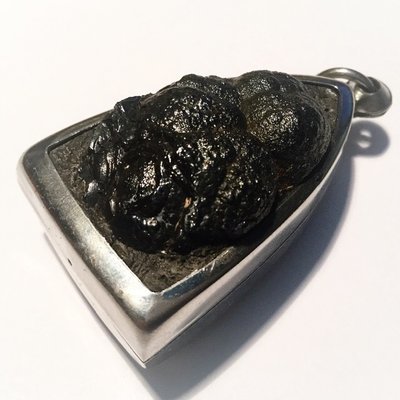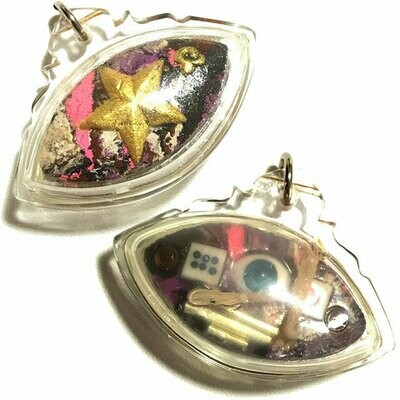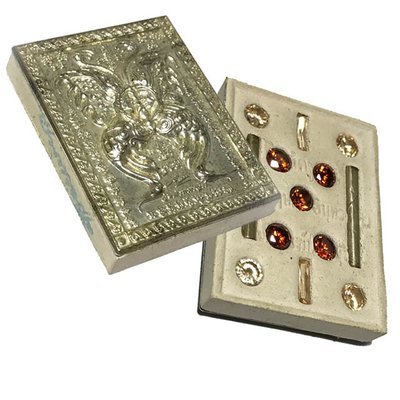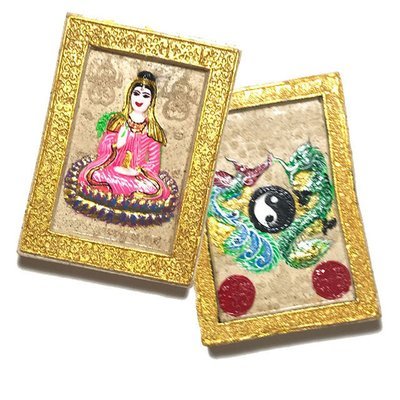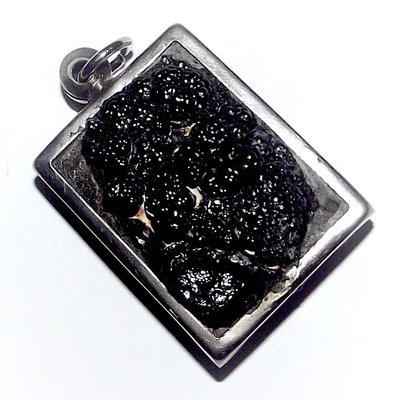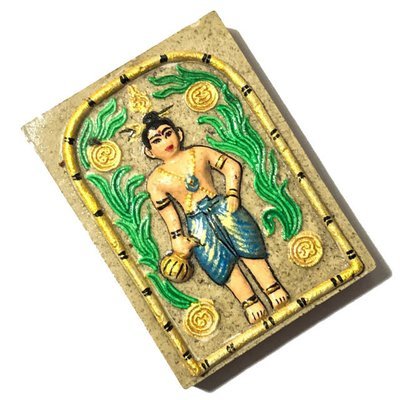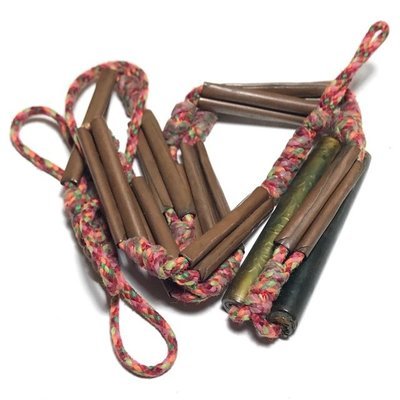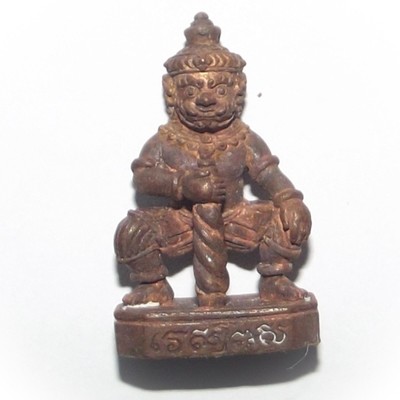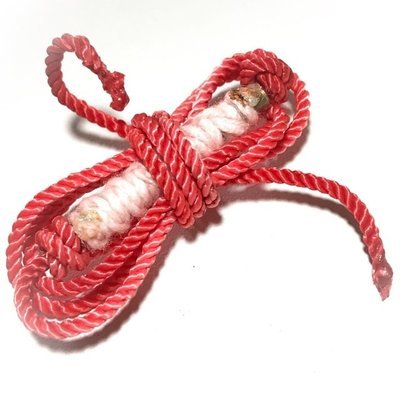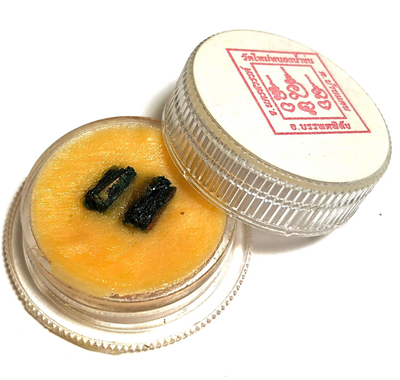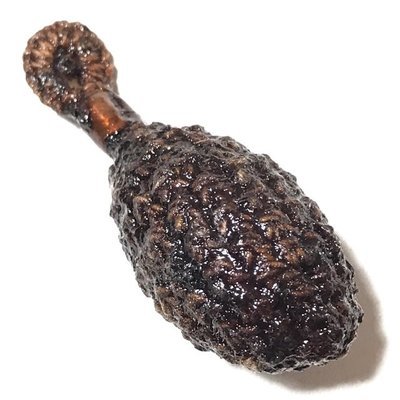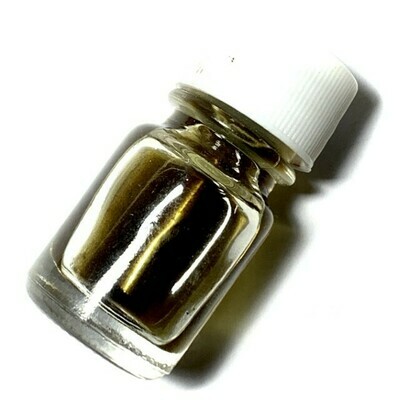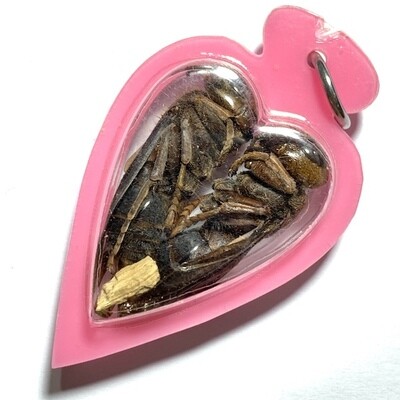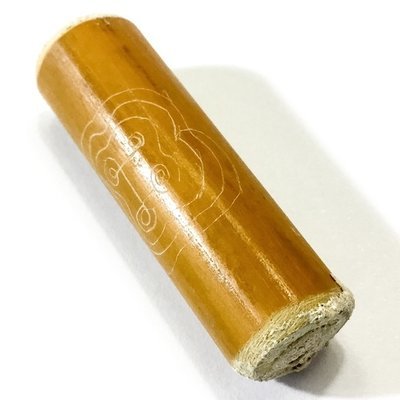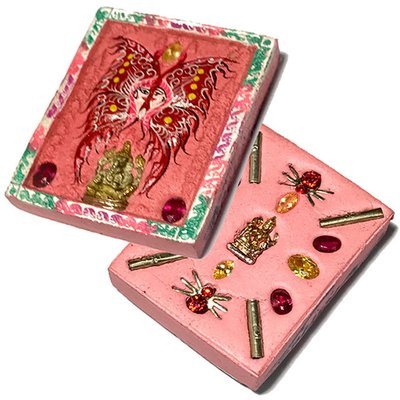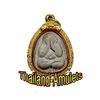

Thailand Amulets
Thai Buddhist and Magical amulets for Wealth, Health, Love and Happiness.
Vast Selection of Amulets
We have a vast selection of over 4000 different kinds of Sacred Amulets and Bucha Items, including Buddha Image, Loi Ongk statuettes, Buddhist Monk Coin Amulets, Takrut Charms, Nam Man Prai Oils, Mai Kroo Wands, Mitmor Ritual Knife, Lek Lai Kaya Siddhi Elemental Substance, Kumarn Tong, Gambling Amulets, Mae Nang Prai, Muan Sarn Sacred Powder Amulets, Palad Khik, Animist Charms, Necromantic Amulets, Buddhist, Animist, Brahman and Necromantic Amulets.
Duang Ta Hok Chaek Solomonic Seal Eye of Providence filled with Muan Sarn Taw Waes Suwan Enchanted Gems & Libido Increasing Powders LP Simpalee Only 99 Made
Duang Ta Hok Chaek, Ongk Kroo Limited Edition Model Forged Brazen Metal Medallion Amulet, featuring the Solomonic Seal (also known as the Seal of Solomon, aand in the Hebraic tradition as the Star of David, but which originates from more ncient tomes such as the Vedas, and the book of Solomonic Pentacles, and, can also be found in Buddhist sacred geometry and various other magic magical traditions around the world, as well as the Indian Vedic traditions, and ancient Chinese astrological symbolism). The center of the Yant Hok Chaek six sided pentacle/star Yantra, also known as the Solomonic seal, features the image of the All-Seeing Eye of Providence. Made to raise funds for the completion of the building of the Hor Rakang Temple Bell Tower.
When we take a look at the rear face of the medallion, we can see that it has been filled with Muan Sarn Sacred Powders, containing the Infamously Powerful Rae Perm Palang Gaay Libido Increasing and Health Inducing powders, and Rae Lek Nam Pi (Lek Lai Kaya Siddhi substance powders), with a Loi Ongk statuette of Taw Waes Suwan Asura Deva, Lord of Wealth, Ploi Sek Maha Pokasap Treasure-Attracting Enchanted Gems and Pratat Relic insert, blessed by the Great aged monk, LP Simpalee.
Below; An explantory narrated video from Ajarn Spencer Littlewood, reveling the intricacies of the Wicha within this amulet.
Luang Phu's amulets have increased in popularity around the country, and south east Asia, and even to Buddhists and Practitioners of the Occult in the Western World, after it became Nationally known that his amulets have real power, and furor was set loose, causing his amulets to increase in price and rarity since many years already.
Luang Por Simpalee's amulets are famously reputed for their power to work with all devotees, and to give sure results .The Buddha taught us that nothing in Life is Certain, but the amulets of Luang Por Simplii, are as close to a certainty as one could possibly get with an Amulet in this Era. His amulets are now extremely sought after, and very difficult to encounter, due to immense demand from devotees around the world.
Few Masters can reflect such an amazing trajectory these days, and few can display such easily visible miraculous traits of meritorious practice. One of the last remaining direct Looksit of Luang Phu Mun, and one of the last remaining Masters of the previous Generation of Guru Monks to remain with us.
This Grand Master of over 120 years old (written 2022), is now highly in demand for his extremely powerful and authentically made Amulets. Luang Por Simpalee's extreme attention to detail and faithfulness to the authentic methods of applied Magical Wicha Saiyasart, have made his amulets among the most highly sought-after in the present era.
His affinity and power to call the Magical Lek Lai Kaya Siddhi elemental substance, is renowned throughout the country and in various other countries of south-east Asia. His use of ground up powdered Lek Lai substance in the Muan Sarn Sacred Powders used for his Amulets, has become truly a trademark, as well as his use of Rae Perm Palang Gaay sacred herbal ingredients which have the power to heal a multitude of illnesses and mortal afflictions, and increase Libido.
Taw Waes Suwan is inserted into the rear face of the Daw Hok Chaek, for wealth increase, and to increase Baramee (Parami - Meritorious Virtues), in order to attain promotion, or to command well in position of boss, CEO, or business owner. He also prevents wealth from being lost, protecting your assets, and protects against all forms of black magic, ghosts and demons.
Taw Waes Suwan is known as Kubera in Vedic Cosmogeny, and in Buddhist legend is said to have been responsible for giving the Atanatiya Paritta Kata Incantation to the Buddha's Monks in the forest, to keep bothersome spirits away during their meditative practice and austerities. Taw Waes Suwan may be an Asura, but he is an Asura King, Lord of the Northern Quarter of the Jadtu Maha Rachiga celestial High Heavens, and commands all other Asura.
Britannica defines Asura as such; "Asura, (Sanskrit: “divine”) Iranian ahura, in Hindu mythology, class of beings defined by their opposition to the devas or suras (gods). The term asura appears first in the Vedas, a collection of poems and hymns composed 1500–1200 BCE, and refers to a human or divine leader. Its plural form gradually predominated and came to designate a class of beings opposed to the Vedic gods".
Below, a detailed talk bout the many stories and legends surrounding Taw Waes Suwan, Narrrated by Ajarn Spencer Littlewood, clearing up many confusions about this Deva. The narrative contains an explanation of Taw Waes Suwann's place in Thai Buddhist Cosmology, and the Kata Incantation used for Bucha (Poojah) to this Deva of the Jadtu Maha Rachigaa Realm. Lord of Riches, and Master of all Giants, Ghosts, Demons and Monsters.
Later the asuras came to be understood as demons. This pattern was reversed in Iran, where ahura came to mean the supreme god, and the devas became demons. In Hindu mythology, the asuras and the devas together sought to obtain amrita (elixir of immortality) by churning the milky ocean. Although they had agreed to share the amrita, strife broke out over its possession, which led to a never-ending conflict.
In both Buddhist and Brahmin Cosmological Pantheon, the four directional points of the compass have a Deity allocated to each direction. The deity allocated as the Lord of the North is “Taw Guwern” (Guberan), or more commonly known as “Taw Waes Suwann” (the word “Taw” meaning “Lord”). In Bhuddhist tales and Fables he is known by his Pali name Waes Suwann, or Waisarawan (Sanskrit).
In both Thailand’s “Ramayana” and the original Hindu Brahmin Epic “Ramayana”, the name of this Being is “Lord Guberan” (Taw Guberan). Apart from this, The Lord of all Rich Fortunes and the Northern directions has other names, such as Tanesworn, Waisarawan, Yanksaraja, Raaksentorn, Ratanakan, and Aitawita (son of Itawata). Taw Waes Suwann is seen guarding the entrance to most Thai Temples, and is highly revered by Thai Buddhists as the lord of Great Fortune and Riches.
The specific empowerments performed by Luang Phu Simpalee have endowed this amulet with Powerful Wicha, for Goood Karma, Anti Black Magick and Protection, but not only. The Muan Sarn of the amulet and empowerments also are filled with Metta Mahaniyom, Klaew Klaad, Kong Grapan and Serm Duang as expected from his Amulets, Maha Lap and Maha Pokasap Wealthy Fortunes Magic, and Jerajaa Business Smooth-Talk. Luang Por performed his empowerments ubiquitously, in the way he always does, which is for those who know him, one of the most powerful empowerments one could expect, although he does not make a grand show of it.
So there are no amazing fireworks, or special effects with this Great and Ancient Forest Monk, but the real effect of magical power, is more what Luang Por prefers to concentrate on. In his usual silence manner and extreme focus, he blocked out the world, and focuses inwards to channel the streamflow of the Buddhas. He invokes and raises these Powers, and Transmits them outwards, embedding the power of the Buddhas Accomplishments, and the power of his own Sorcerous Incantations within the amulets.
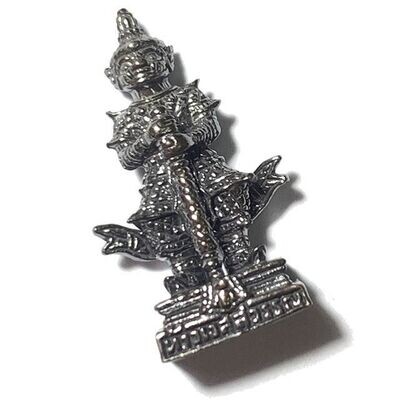
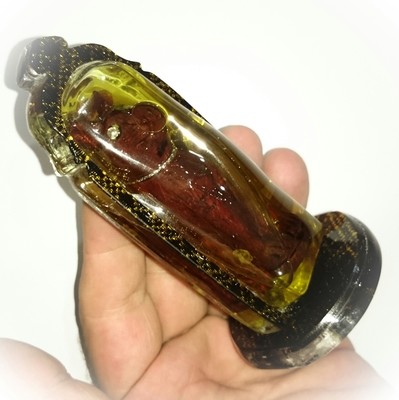
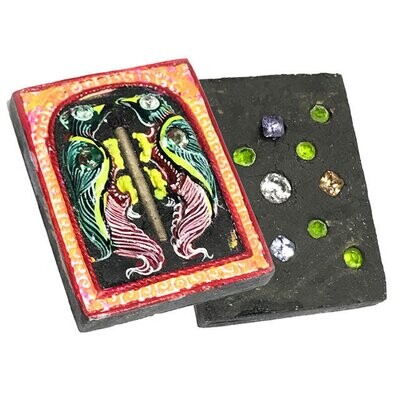
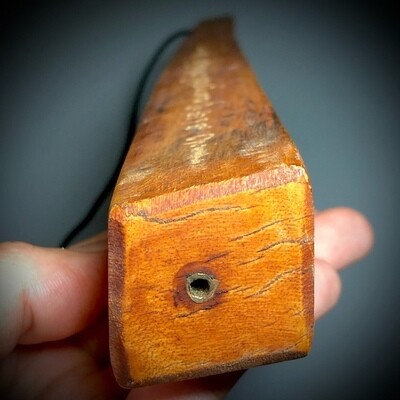
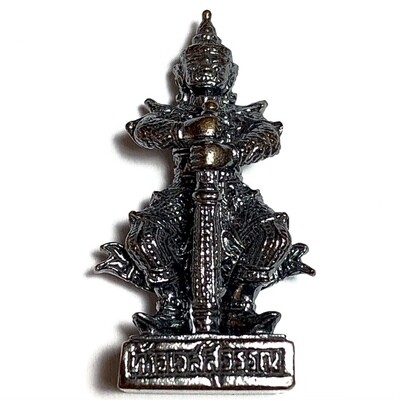
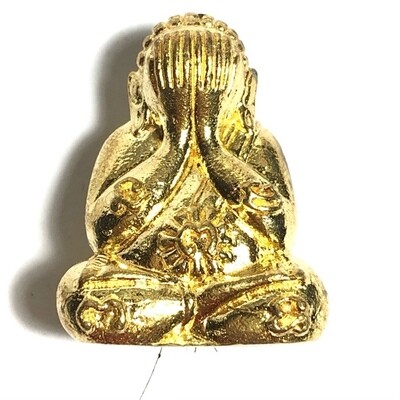
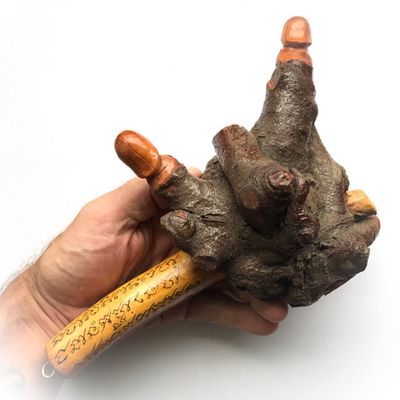
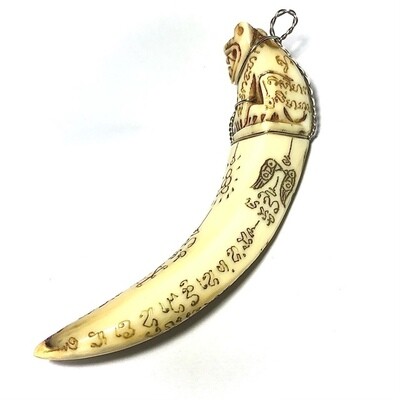
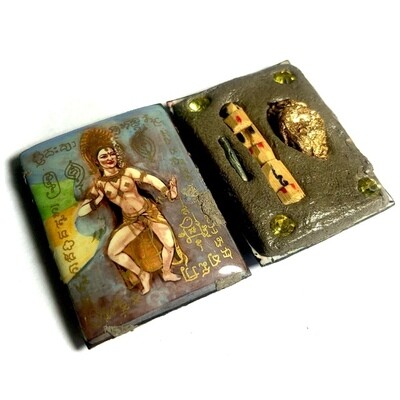

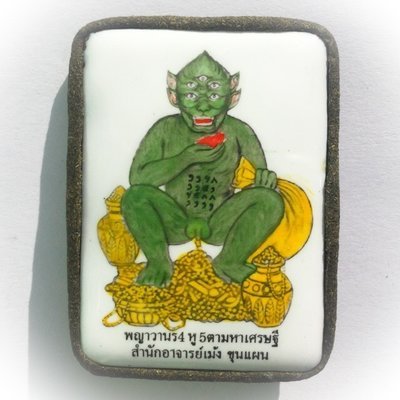
Contact Us
Follow Us on Youtube
About Us
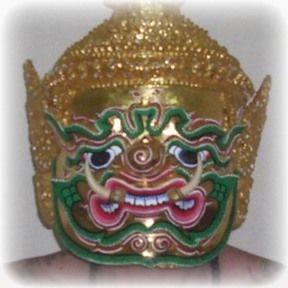
Ajarn Spencer
Proprietor
Thailand Amulets is owned and Administrated by Thai Occult and Amulet expert, Ajarn Spencer Littlewood who guarantees only authentic blessed amulets, and a free gift with every order, as well as his safe delivery or money back guarantee. https://facebook.com/ajarnspencer
